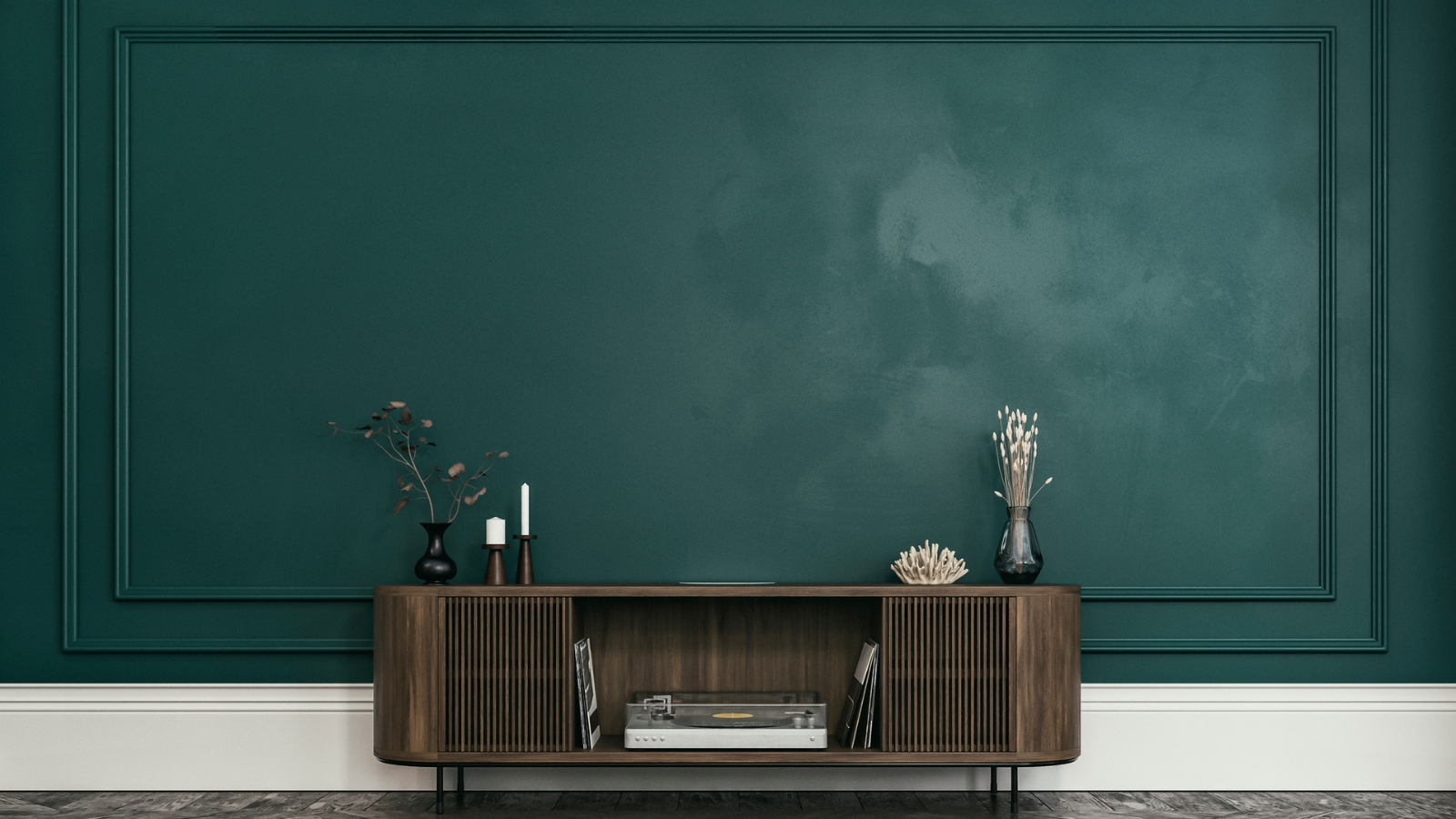Should you get a lead paint test for your home?
Experts reveal the dangers of inhaling any dust from lead paint and the safest methods for testing


If you're thinking about testing for lead paint in your home, you're doing the right thing. Lead is a chemical that's not to be messed with and shouldn't be anywhere in or near your home.
Unfortunately, lead used to be very commonly used in paint, among other building materials. If you live in an older property, it's a very good idea to have the existing paint tested for lead.
However, this is one of those household projects not to DIY. We've asked professional environmental testers to explain why that is and how you can begin the journey to getting lead paint identified and safely removed from your home.
How common is lead in US homes?
That depends on when your home was built. The good news if your home is newer (that's made after 1978) it’s highly unlikely you have any lead in the paint on your walls. Bethany Urib, Mitigation Division Supervisor at ASAP Restoration, says, ‘in fact, it’s illegal to use anything that would contain this element in new buildings.’
Now, the not-so-good news. If your home was built before ‘or around 1978, ‘the odds of lead being present in one of the building materials is almost a guarantee.’ Lead paint was extremely common until it was banned in the US, and, according to the Center for Disease Control And Prevention, lead paint can still be found in 29 million housing units across the country.
How dangerous is lead paint?
Roy Sarin, Owner of NY Lead Paint Experts, is unequivocal about the dangers of lead paint: ‘Exposure to lead paint is extremely hazardous, especially to children and pregnant women, where it has been linked to developmental issues and various health problems.’
There’s no need to panic, however. First of all, it’s important to understand what is meant by exposure. Lead is absorbed into the human body through lead dust, which can be inhaled, ingested, or absorbed through the skin.
As Bethany Uribe explains, ‘this is why any building that is of this age, we test for environmental contaminants before we do any sort of renovation or reconstruction work.’ Lead paint is typically disturbed when people start renovating, so if you’re considering a renovation and removing paint from the walls, you really should get it tested for lead first.
If you’re not disturbing lead paint in any way, it won’t cause you any harm. As Bethany tells us, ‘If there is lead present in the paint on your walls, as long as you aren’t flaking off chips and eating them, it’s not as dangerous as driving to the grocery store in terms of risk factor.’
That said, little kids and pets ‘put whatever they want in their mouths’. So, if you live in an older home that has paint chipping off walls, make sure your kids/pets aren’t accidentally eating it.
How much lead exposure is dangerous?
While even small amounts of lead exposure can have health consequences, a one-time exposure is unlikely to be harmful unless it involves a child or pregnant person. If you think you may have been exposed, seek medical advice.
If you’ve just started renovating and possibly inhaled some lead dust once, don’t worry about it too much. What you want to avoid is lead exposure over many weeks or months.
How to test for lead in your home
Robert Weitz, Principal and Founder at RTK Environmental Group, is an environmental testing expert. He explains, ‘Lead paint testing is performed using an x-ray fluorescent device that doesn’t do any destruction but rather reads through layers of paint to determine if lead is present.’

Robert Weitz is an environmental testing expert. He’s also a certified microbial investigator and principal at RTK Environmental Group, a leader in the field of testing and consulting in mold, lead, asbestos, VOCs, water, soil, radon, and indoor air quality.
Can you do a DIY test for lead?
You can, but you shouldn’t. There are several reasons for this. Robert Weitz identifies the following ‘risks and limitations’ of DIY testing kits:
- DIY lead testing kits often lack accuracy and sensitivity, potentially failing to detect low, yet extremely harmful, levels of lead.
- They are prone to false positives and negatives, which can lead to unnecessary anxiety or dangerous complacency.
- Their scope is limited, often testing only surface lead, and not identifying it in deeper layers.
- DIY tests usually don’t meet regulatory requirements for lead paint testing.
One common situation where DIY lead testing kits may prove to be unreliable is when lead paint has been painted over with non-lead paint. The DIY testing kit, which is a water-activated swab test, will tell you there’s no lead in the surface paint but will fail to detect the lead underneath.
A professional will use an XRF analyzer, which is a handheld X-ray tool that detects metal alloys beneath surfaces and even in soil. It is extremely expensive, costing upwards on $20,000, so for most people, inviting a professional to do the testing will be accurate and safe.
You can still use DIY testing swabs such as the Scitus Know DIY Lead Paint Test Kit swabs from Amazon as an intermediary measure before a professional test. If the DIY test is already showing you have lead, you’ll know you need to be extra vigilant and watch out for any chips in your paint.
Testing for lead paint is easy with the help of a professional. It is very important to test an older home for lead, especially if you are planning on renovating or selling your home. The presence of lead is a red flag that scares off potential buyers and many will know to worry about lead potentially being present in homes built prior to the 1970s.
The sooner you test, the less you'll need to worry about the potential health consequences for you, your family, and any renovators working on the home.
Sign up to the Homes & Gardens newsletter
Design expertise in your inbox – from inspiring decorating ideas and beautiful celebrity homes to practical gardening advice and shopping round-ups.

Anna is a professional writer and academic. She taught English Literature for several years before joining Future where she wrote for Real Homes, Homes & Gardens and Livingetc for four years. She is a regular contributor for Parade Home, BiggerPockets, and many other publications. In her spare time, Anna enjoys hiking and gardening.
-
 Sarah Michelle Gellar's kitchen cabinets are moody yet elevated – I've always used dark paint with caution, but they make bolder tones accessible
Sarah Michelle Gellar's kitchen cabinets are moody yet elevated – I've always used dark paint with caution, but they make bolder tones accessibleThe actress's black kitchen cabinets are bold yet palatable, proving that this dark shade is a trendy yet timeless color pick
By Hannah Ziegler
-
 Jeremiah Brent's new NYC-inspired rug collection has got to be the easiest way to bring his modern Manhattan style into your own home
Jeremiah Brent's new NYC-inspired rug collection has got to be the easiest way to bring his modern Manhattan style into your own homeJeremiah Brent has teamed up with Loloi Rugs to create a contemporary collection of home furnishings inspired by his city
By Eleanor Richardson